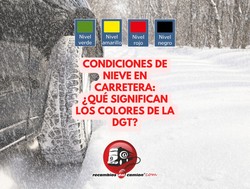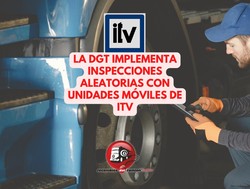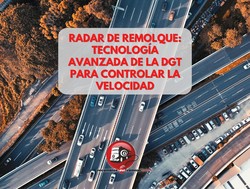New DGT fine for carrying the dog in a vehicle
From now on you should keep in mind that if you drive with your pet in the vehicle, you can be fined if you do not do it correctly. In this article we explain what these fines consist of and how to avoid them.

Inappropriately taking your dog or cat in the car can cost you up to a 500-euro fine. This is because the driver's freedom of movement is endangered. This is stated in article 18.1 of the General Traffic Regulations.
The pet can never go in the passenger seat. In this case, the DGT can fine you up to 500 euros, even if it is in its carrier.
If your dog is loose in the rear seats, the penalties will be between 80 euros and 200 euros. The same happens if you use a security device that is not approved. Non-compliance does not mean a loss of points
In addition to the sanctions, what is most important is that, in the event of an accident, you expose yourself to truly serious damage.
If your pet is not securely restrained in the rear seats and you are in a crash, it increases the chances that your pet will be thrown toward the front of the vehicle, potentially causing serious injury to you or exacerbating the accident.
In addition, of course, the pet's own safety is at stake in these situations, so it is worth knowing how to accommodate the dog in the car to avoid scares.
The use of an adequate restraint and fixation system in a vehicle for pets is essential. In the event of an accident, a 20 kg dog would weigh 700 kg and this would cause serious consequences for the animal itself and also for the rest of the occupants.
According to the DGT website, the best way to carry pets, if they are small, is in their carrier on the floor of the vehicle. If the pet is large, it is best to place the carrier in the trunk in a transverse position to the direction of travel. In this case, for greater security, it is preferable to combine this system with a dividing grid.
In addition to always using an adequate restraint system, the DGT recommends consulting the veterinarian how to prevent dizziness, not leaving your pet inside the vehicle with high temperatures and when opening the gate or door, anticipate risky situations, since the animal can run away.
The DGT has studied the different methods, analyzing their efficiency and behavior in the event of a collision. Here you have the summary:
• LOOSE ANIMAL: The worst possible scenario is the dog lying on the rear tray, behind the driver. The animal will be thrown against the driver's headrest in the event of an accident. The two would suffer very serious injuries, even fatalities.
• SINGLE ENGAGE HARNESS: Harness clips to vehicle seat belt. In the event of a collision, the harness buckle breaks. The dog collided with the back of the seat, causing serious spinal injuries to the driver. The animal would suffer serious or fatal injuries.
• HARNESS WITH TWO HOOKS: The harness prevents forward displacement, therefore, no load is transmitted to the driver. To prevent the pet from colliding with the seats -with very serious consequences-, they must have a short joint system.
• CARRIER ATTACHED WITH SEAT BELT: The carrier destroys the belt attachment points. In addition, its upper part is broken. The animal suffers very serious injuries and the occupants of the vehicle bear significant loads.
• CARRIER PLACED ON THE FLOOR OF THE VEHICLE: Small carriers fit well on the floor. As they have little space, the energy of the impact is quickly absorbed and the animal's cabin is hardly deformed, which only suffers minor injuries.
• CARRIER IN THE TRUNK: When the animal is larger and the carrier too, it can be placed in the trunk in a transversal position to the direction of travel. The possibility of injuries to the rear seat occupants cannot be excluded.
• DIVIDING GRID: A grid placed between the pillars of the car structure, separating the cabin from the trunk, allows the pet to move freely without disturbing the driver, but in the event of a collision and depending on the position of the animal at that time, it can sustain very serious injuries. It is best to combine the carrier with the dividing grid.





Receive our news